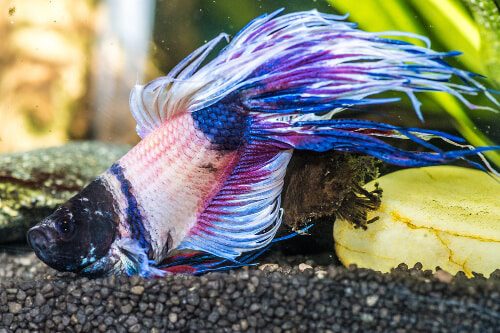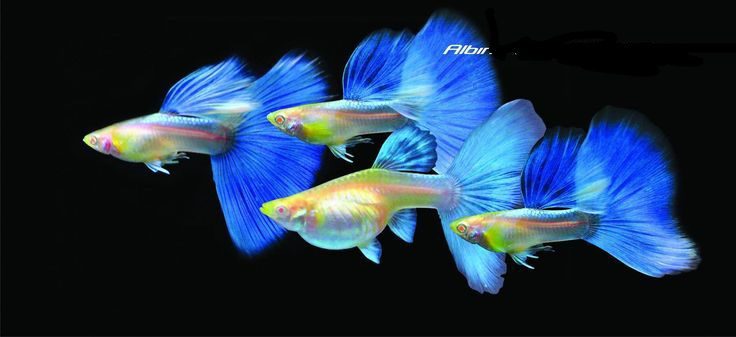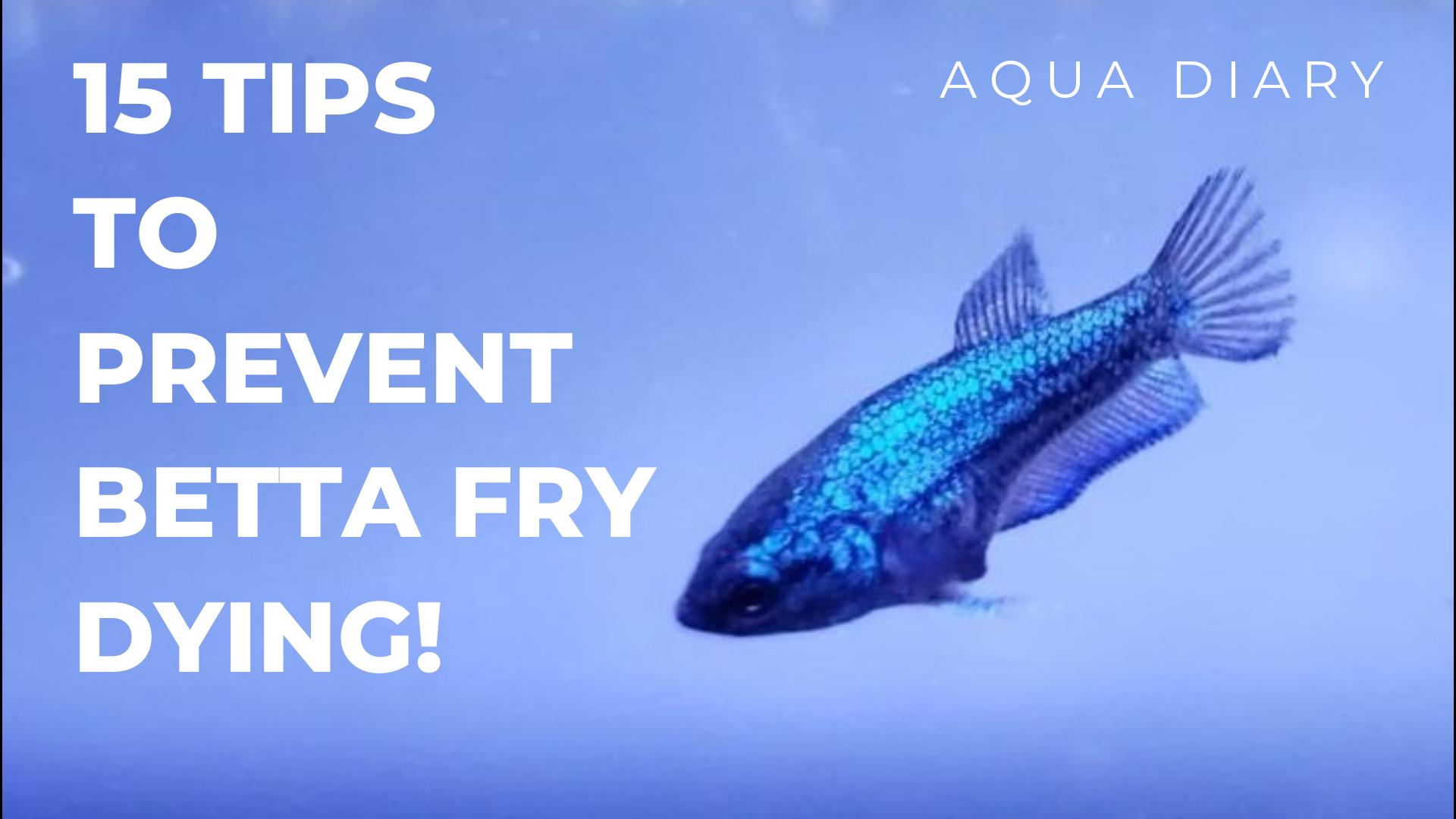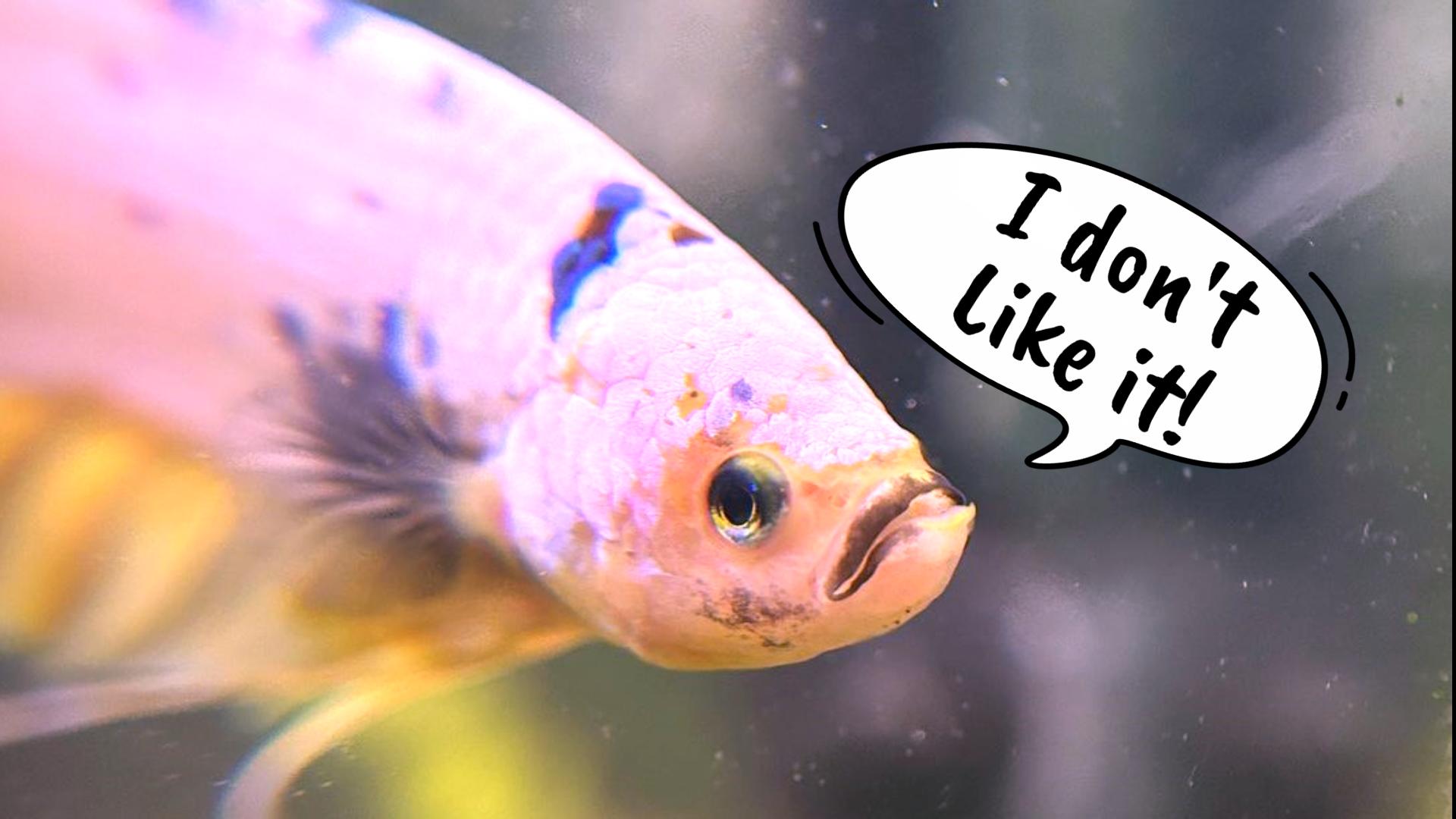Today, we’re discussing 10 common betta fish diseases in detail. In my experience, understanding the symptoms and treatments for betta fish illnesses is essential for every betta fishkeeper. I know betta fish diseases and treatments are not the most exciting topic to watch. If you’re here, that means you’re someone who really cares about your betta fish and wants to keep them healthy and happy. In this post, we’ll discuss some of the most common betta fish diseases and steps you can take to prevent them from happening in the first place. So, let’s jump right in and start!
#1. Ammonia poisoning.
Ammonia poisoning occurs when ammonia levels are high in aquarium water. This can be caused by overfeeding, inadequate filtration, or overcrowding in the tank. Ammonia is a toxic substance produced from fish waste, uneaten food, and decaying plants. In a healthy aquarium, ammonia levels are kept under control by beneficial bacteria that break down and remove the toxin. However, if the tank is overcrowded or there isn’t enough filtration, ammonia levels can rise quickly and harm your fish. Ammonia poisoning symptoms include red or inflamed gills, difficulty breathing, gasping for air often, clamped fins, loss of appetite, and lethargy. In severe cases, the fish may become paralyzed or die.
If your betta fish shows signs of ammonia poisoning, swift action is vital to lower ammonia levels in the tank. Start by testing the water to gauge ammonia levels, ideally maintaining it between 0 to 0.5 ppm, as any ammonia, even in trace amounts, can harm your betta’s gills. High levels necessitate an immediate water change while addressing the root cause like overfeeding or insufficient filtration is crucial. Employing a water conditioner or ammonia neutralizer aids in toxin removal and fish protection. Furthermore, consider introducing beneficial bacteria to the tank, which effectively controls ammonia buildup, promoting a healthier aquatic environment.
#2. Swim bladder disease – Betta Fish Diseases
Swim bladder disease is a condition where gas fills your Betta fish’s swim bladder, affecting its buoyancy. Symptoms include floating or sinking, and struggling to stay upright.
Causes include overfeeding, constipation, bacterial infections, or injury. Overfeeding leads to constipation, which damages the swim bladder. Bacterial infections or injury can also harm it.
Symptoms include erratic swimming, buoyancy issues, distended abdomen, appetite loss, and lethargy.
Treatment depends on the cause. Adjust the diet, add aquarium salt, isolate affected fish, and maintain clean water. To prevent it, feed high-quality food in appropriate portions, soak pellets before feeding, and maintain tank hygiene and temperature stability.

To prevent your betta fish from developing swim bladder disease, if you feed processed food, it’s critical to give them only high-quality food from reputable brands. Soak their food for a few minutes before feeding to prevent them from gulping the air or eating food with air. Don’t overfeed them. 2-5 pellets daily are enough. Proper tank maintenance is also crucial, such as regular water changes, removing algae, and cleaning tank ornaments. Keep the tank temperature steady and avoid sudden changes.
#3. Constipation – Betta Fish Diseases
Betta fish constipation is a condition that occurs when a betta fish has difficulty passing its waste due to a blockage in the digestive system.

It can be caused by overfeeding, consuming the wrong type of food, or even stress. When your fish eat too much food, it can lead to an excess buildup of waste, making it difficult to pass stool.
Symptoms of betta fish constipation include a bloated or swollen belly, a lack of appetite, and decreased activity levels. Your fish may also have difficulty swimming or swimming in an unusual manner, such as floating at the surface or sinking to the bottom of the tank.
To treat betta fish constipation, there are several steps you can take. First, stop feeding your fish for two to three days. This will give their digestive system a chance to clear any blockages. You can also try feeding your fish a small amount of cooked peas, which can help move things along in their digestive system.
Betta fish constipation is prevented by feeding your fish a varied diet of high-fiber foods. You should also avoid feeding your fish too much at one time. Instead, try feeding them small meals throughout the day. There is a full post on our website that offers in-depth information about betta constipation and treatment. Be sure to check it out.
#4. Dropsy
Betta fish dropsy is a serious condition that affects the fish’s internal organs, causing them to fill with fluid. Dropsy is a symptom, not a disease itself. Dropsy can be caused by several factors such as a bacterial infection, poor water quality, overfeeding, or genetics.

Bacterial infection is the primary cause of dropsy in bettas, often due to poor water quality, overfeeding, or stress. Internal parasites, kidney failure, or liver disease can also lead to dropsy.
Common signs include abdominal swelling, protruding scales, loss of appetite, lethargy, and swimming difficulties.
Treatment options include aquarium salt and methylene blue baths, depending on the cause. Unfortunately, dropsy from kidney or liver failure may be irreversible.
Preventing dropsy involves maintaining a clean tank, avoiding overcrowding, and providing a varied diet to ensure bettas get essential nutrients.
How to distinguish betta fish dropsy from constipation?
In both conditions, you may notice your betta fish belly is big and swollen. The easiest way to differentiate between the two is to observe if your fish passes stools or not. Passing stools indicate dropsy, while absence suggests constipation. You may also see a “pinecone” appearance on your betta fish when viewed from the top, which indicates dropsy rather than constipation.
#5. Fin Rot – Betta Fish Diseases
Betta fish fin rot is a common fungal or bacterial infection that affects fish’s fins and tails. In the early stages of fin rot, the fin edges discolor, appearing milky on the edges. As the infection spreads, small pieces of the fins die and fall off, leaving a ragged edge. Over time the fins become shorter and shorter as dead flesh sloughs off the affected fins.

The primary cause of fin rot is poor water quality, which fosters bacteria, parasites, and fungal infections. Overfeeding or underfeeding weakens the immune system, increasing the risk of fin rot.
Symptoms include ragged or disintegrating fins, possible discoloration, lethargy, and loss of appetite.
Treatment involves water quality improvement through regular changes and stress reduction. Antibiotics like tetracycline, ampicillin, and erythromycin can treat the infection.
Preventing fin rot requires good aquarium maintenance: regular water changes, gravel vacuuming, and water chemistry monitoring. Feed sparingly, maintain warm water temperatures, and avoid overfeeding.
What is the difference between fin-rot and fin-damage?
Fin damage in betta fish typically occurs due to physical injury. This can happen when bettas get their fins snagged by sharp tank decorations or nipped by other fish. When this happens, the betta’s fins can tear, resulting in fin loss. Also, big-fin betta fish are known for biting their own tails under stress, which is also referred to as fin damage. On the other hand, fin rot is a bacterial infection that affects betta fish. It is caused by a variety of bacteria and manifests in different ways. It typically results in tattered, rotten fins. If you look closely at the betta fish fins, you may see bloody or blackened edges, which shows not just one part of the problem.
#6. Ich (or) White Spot Disease
Betta fish Ich, also known as White Spot Disease, affects the fins and body of Betta fish. It is caused by a single-celled parasite called Ichthyophthirius multifiliis, which attaches itself to the fish’s skin, fins, and gills, causing characteristic white spots or cysts.

The parasite is commonly found in most aquarium environments and can be introduced to the tank by new fish, live food, or even plants. It grows well in warm, freshwater environments with poor water quality, making Betta fish particularly susceptible to infection.
Ich symptoms in Betta fish include the appearance of white spots or cysts on the body, fins, and gills. The fish may also flash, rub against objects in the aquarium, and exhibit rapid breathing. In severe cases, the fish may become lethargic, lose its appetite, and develop secondary bacterial infections.
Treatment for Ich in Betta fish involves treating the entire tank with medication, such as copper sulfate or formalin, to kill the parasite. It is critical to remove any activated carbon or other filter media before treatment, as it can absorb the medication and reduce its effectiveness. In addition to medication, improving water quality by maintaining clean and well-oxygenated water can help fish recover from Ich. Increasing the water temperature to between 82-85°F can also speed up the killing of parasites and increase medication effectiveness. However, move your betta fish out of the aquarium to avoid high temperatures and shock during this period.
#7. Popeye – Betta Fish Diseases
Pop eye is a health condition that affects all fish, including betta fish. It can be identified by the bulging of one or both fish eyes. The eye swelling is caused by a build-up of fluid or infection in the eye socket. Pop eye is not contagious, but it is a sign of poor water quality and stress in fish.

There are several factors that cause popeye in betta fish. The most common cause of pop-eye is dirty water, and the effective form of prevention is frequently replacing dirty tank water with fresh water. Always have clean water in the betta’s fish tank or bowl to prevent pop-eye.
Popeye’s most noticeable symptom is a bulging and swollen eye. You may also observe a thick white ring around the eye. In addition to this, your betta may show signs of general illness such as loss of appetite and lethargy.
To treat Popeye, the first step would be to isolate the fish in a clean water container, add Epsom salts of 1 tablespoon per gallon, and allow the fish to take salt baths for ten to fifteen minutes for a few days. In case of severe infections, you may need an anti-bacterial treatment like Melafix or Maracyn which can be helpful.
To prevent betta fish popeye, it’s critical to maintain fresh water, avoid overfeeding, perform frequent water changes, and install a proper filtration system. Quarantine new fish for at least two weeks before introducing them to the tank. Remove any fish showing pop-eye symptoms and treat them in a separate tank. Avoid stressing your betta fish with loud noises and sudden movements, and enhance tank lighting with options like timers.
What is the difference between popeye and cloudy eye?
Betta fish popeye and cloudy eye disease are two separate conditions that affect betta fish. While they may have some similarities in symptoms, they have different underlying causes and require different treatments.
Pop-eye is a condition that causes the eyes to swell or bulge out of the eye socket, causing the buildup of pressure behind the eye. This can result in white spots or a ring around it. It is caused by a bacterial infection or injury and can be exacerbated by poor water quality and stress. Similarly, cloudy eyes, on the other hand, are characterized by a milky or hazy appearance in one or both eyes of your fish. Even though it can be bacterial infection or poor water quality, generally it comes on white and dragon scale betta fish as a genetic disorder.
In the case of dragon scale betta fish, it’s also known as the diamond eye which has unfortunately been promoted as a rare breed. In reality, it is a genetic disorder in which scales grow over the eyes of betta fish, causing blindness. Unfortunately, there are no treatments or preventions available.
#8. Fungal infection – Betta Fish Diseases
Betta fish fungal infection, also known as cotton wool disease, affects betta fish. It is caused by a fungus called Saprolegnia, which grows in poor water conditions and low oxygen levels. The fungus appears as a white or grayish patch on the betta fish’s skin, fins, and gills, which can spread quickly if left untreated.

Fungal infections in betta fish can be caused by several factors, including poor water quality, injury, stress, and weakened immunity. Poor water quality creates a favorable environment for fungus growth. Fungal infections can also occur due to injuries or wounds that allow the fungus to enter the betta fish’s body. Fish being nipped by other fish or sharp objects can also lead to fungal infections. High stress levels and weakened immunity caused by poor diet and other health conditions can increase betta fish’s exposure to fungal infections.
Fungal infection symptoms include white cotton-like patches on the fish’s body or fins, frayed fins, and lethargic behavior. You may see the betta rub itself against aquarium objects. If left untreated, the infection can spread and cause more severe symptoms such as lack of appetite and difficulty swimming.

Treatment for fungal infections in betta fish depends on severity. Improve water quality and use pet store antifungal medications like methylene blue or malachite green. Severe cases may require isolation and antibiotic treatment. Maintain pristine water quality and remove uneaten food and debris during treatment.
Preventing fungal infections involves good water quality and stress reduction. Regular water changes, filtration, and waste removal help. Herbal remedies aren’t effective; stronger medications are needed for infected fish.
#9. Betta tumors
Betta fish tumors are abnormal growths that occur in betta fish bodies. These tumors can be benign or malignant, and they can occur in different parts of the fish’s body, such as the fins, scales, or internal organs.

Betta fish tumors’ exact causes are unclear but linked to factors like poor water quality, genetics, or a weakened immune system. Symptoms vary with tumor location: lumps on the body or internal issues causing weight loss, irregular swimming, or breathing difficulties.
Sadly, betta fish tumors are incurable, and tumor removal surgeries are risky. Tumors may reoccur. Yet, you can manage symptoms for a better quality of life. Keep their environment clean and stress-free, maintain water quality, and offer a nutritious diet.
Betta fish tumors aren’t contagious to other tankmates. Avoid health issues by purchasing from reputable dealers, as genetic makeup affects a fish’s health, including tumor susceptibility. Beware of online sellers misrepresenting unhealthy bettas, like those with tumors, as “flower horn bettas.” Educate yourself before buying any pet, including betta fish.
#10. Velvet Disease – Betta Fish Diseases
Velvet, also known as Gold Dust Disease, is a highly contagious parasitic infection that affects Betta fish.

Symptoms include a golden dust-like appearance, rapid breathing, lethargy, loss of appetite, and clamped fins. Isolate affected fish, raise the water temperature to 82°F, add aquarium salt, and follow medication instructions. To prevent velvet, quarantine new fish, avoid tank additions, and maintain a healthy tank environment through regular cleaning, water changes, and stress reduction. These steps ensure your betta stays healthy and happy.





